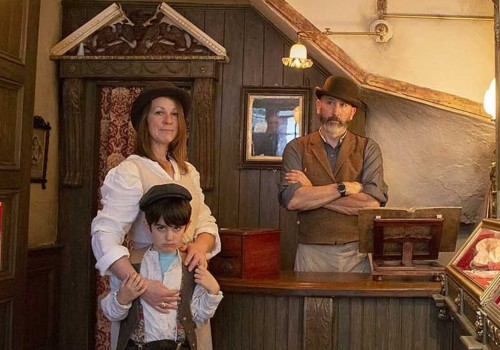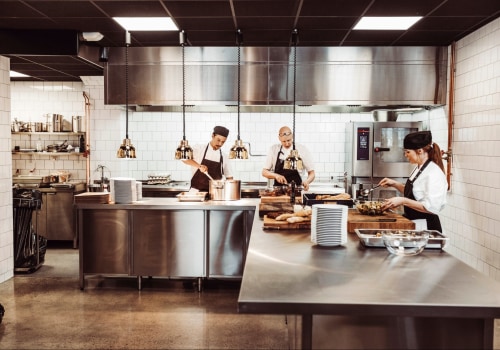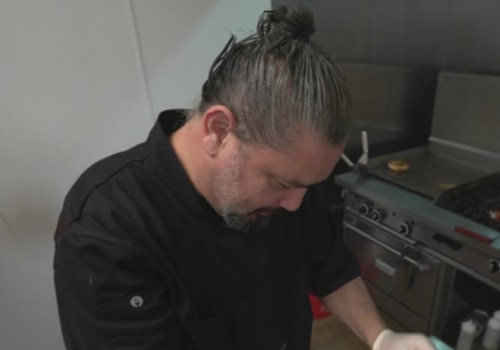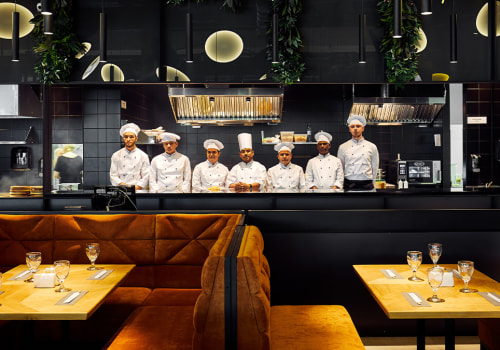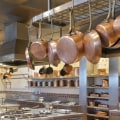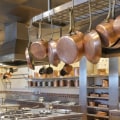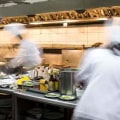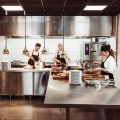However, ghost kitchens have their drawbacks. A simplified start-up process, as ghost kitchens have lower installation needs and costs. In a ghost kitchen, you're cooking in a kitchen optimized for deliveries that's designed to reduce unnecessary costs. The rent is low and the efficiency is high.
You have your own private commercial kitchen space inside a delivery center to prepare orders. It can be difficult to expand your traditional restaurant with high overhead costs. However, since ghost kitchens act as satellite kitchens from their main base of operations, they can easily expand from coast to coast with little capital. As the industry faces historic change, Restaurant365 enables owners and operators to meet the needs of their equipment and pay faster than ever.
Restaurant365 bridges the gap between accounting and operations by centralizing all data, helping restaurant operators to be more efficient, forecast accurately, and address any challenge or opportunity quickly and accurately. Whether you like to watch, read or connect, Restaurant365 has a growing menu of information to keep you up to date on restaurant news and best practices. Requests for shelter on site, restrictions on eating on site and diners' doubts about eating out have combined to make restaurants shift their focus to takeaway food and home delivery. The increase in demand for food delivery had already driven the growth of ghost kitchens, and the COVID-19 pandemic has increased both the popularity and profitability of the model.
Ghost kitchens reduce the cost of real estate and labor by reducing the restaurant model to adapt to off-site food sales. The rise of ghost kitchens is expected to extend beyond COVID-19, according to Technomic, a strategic research consulting group for the restaurant industry, which forecasts an increase in food sales in ghost kitchens by 25% every year for the next 5 years. Existing restaurants are creating their own virtual kitchens off-site, sometimes delivering the food themselves to reduce the costs of third-party delivery services, while others are embracing third-party delivery to increase their visibility. And other restaurant brands rent kitchen space and labor from existing traditional restaurants to expand their delivery range.
Wow Bao, a Restaurant365 customer, recently announced that it has partnered with operators in several cities to provide alternative sources of income by using their space, equipment and staff to serve basic Wow Bao prepared foods, while external delivery providers offer meal delivery to customers. One of the possible negative considerations includes the difficulties of ensuring that food at home offers the same quality as in your restaurant. You'll need to pack your meals to deliver them, including packing the sauces aside and making sure that the containers are insulated. You'll also need to manage your online reputation even more diligently, since your delivery business exists exclusively online.
In addition, if you use third-party delivery applications, your customer service is based on the customer's experience with the delivery service. A bad experience can cause your restaurant to lose a customer forever. Another disadvantage is the shipping cost. Third-party apps can keep 30% of your delivery revenue, and in-house delivery has its own costs, such as salaries, vehicle maintenance, gas and insurance.
As if restaurant staff weren't already one of its biggest challenges, the COVID-19 pandemic has brought it to critical levels. Many employees don't feel safe going back to restaurant jobs because they don't feel safe. For more marketing ideas, read the blog post, 13 restaurant marketing ideas and tips to attract more customers. In its first month of operation, the ghost kitchen has been successful, according to the executive director of Great NH Restaurants, Tom Boucher.
With a very low rent and no reception staff (waiters, hosts, manager) to help recover sales. We will expand and promote in our restaurants, where guests can order and pick up directly at the restaurant on a specific day of the week. This way, we'll reach 10 times more potential customers,” said Boucher. If you want to easily track data and obtain information about your operations, consider a comprehensive and specific management solution for restaurants.
Restaurant365 incorporates restaurant accounting software and restaurant operations software into an all-in-one cloud-based platform. Includes tools for financial reporting, operational reporting, inventory control, scheduling and more. To learn more, schedule a free demo. For entrepreneurs, ghost kitchens offer the opportunity to experiment and launch their restaurant brands at a minimum cost and with less risk than opening a physical store.
One of the advantages of ghost kitchens is the ability to experiment with new menu items or concepts, since you can control the menu available live, so adding a special menu at noon or eliminating an item due to a shortage of ingredients is not so harmful. Most ghost kitchens give up this option to streamline the process for drivers and spend less time and money perfecting the restaurant's façade. Compared to other types of ghost kitchens, kitchen capsules are easy to transport between locations, such as parking lots, and behind restaurants. It doesn't matter if the ghost kitchen is an extension of an existing brand or if it's a completely new concept: every new restaurant needs a business plan.
While the expenses may be lower than those of a typical restaurant, ghost kitchens can still cost tens or hundreds of thousands of dollars in equipment, a location, appropriate licenses, marketing and other advance purchases. Ghost kitchens are great starting points for new foodservice entrepreneurs, Spiegelglass says, because renting that space allows them to test a potential concept. There is no fixed price for a ghost kitchen, as the cost will largely depend on whether you are going to use a police station kitchen or are renting a commercial space. In short, a ghost kitchen provides you with an opportunity to build a successful restaurant concept and get back to normal.
For restaurants that already have a trusted food supplier, it's easy to use that same supplier for a new ghost kitchen concept. If you decide to launch a ghost kitchen for your current restaurant business, these tips will help you set up and manage your new business venture. As a result, ghost kitchens sacrifice direct customer feedback and control over the dining experience. Ghost kitchens are on the rise due to small real estate needs, optimal internal efficiency, the popularity of delivery applications, and a myriad of other factors.
Opening a ghost or dark kitchen requires minimal investment and risk, with unlimited opportunities to grow your restaurant business in the online delivery world. Taking into account these restrictions, ghost kitchens should create a menu of options that are intended for consumption up to one hour after preparation and that are well adapted to local tastes. . .
